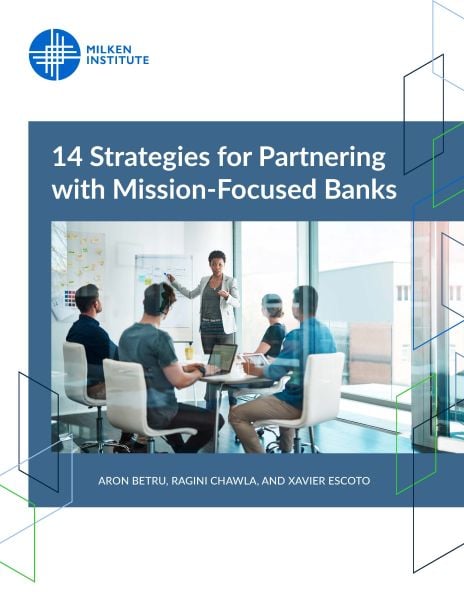
14 Strategies for Partnering with Mission-Focused Banks
Throughout American history, substantial inequality has existed, particularly in minority communities for whom median household wealth continues to lag significantly compared to nonminorities. Compounded by longstanding wealth disparities, the twin health and economic shocks spurred by COVID-19 have devastated minority and low-income households. Access to capital has been among the most important limitations for many minority-owned business enterprises on withstanding the current crisis, increasing scale, and driving post-COVID economic development locally and nationally.
Previous Milken Institute research found that federally designated and mission-driven Minority Depository Institutions (MDIs) and Community Development Financial Institutions (CDFIs) can be powerful fulcrums for equitable access to capital for minority and low-income communities. MDIs are financial institutions in predominantly minority communities, in which minorities own at least 51 percent of the voting stock and comprise the majority of the board of directors. CDFIs are financial institutions that must originate at least 60 percent of their loans and investments in eligible distressed and underserved communities.
The Milken Institute, with support from JPMorgan Chase, has developed a primer for economic development to bridge the racial wealth gap with a focus on equitable access to capital. The purpose of this research is to distill strategies of how stakeholders can partner with MDI and CDFI banks, which have strong track records of targeting underserved communities, to increase their capacity and scale of impact.
These strategies fall into three levels of engagement:
1. Repairing immediate balance sheet capacity needs thorough Tier 1 capital injections,
2. Restoring access to capital at parity across the nation by considering exemplary business models in the industry, and
3. Reimagining the banking system in light of the spectrum of financial services disruptions to ensure minority and low-income communities actively participate in post-COVID recovery and the banking future.

